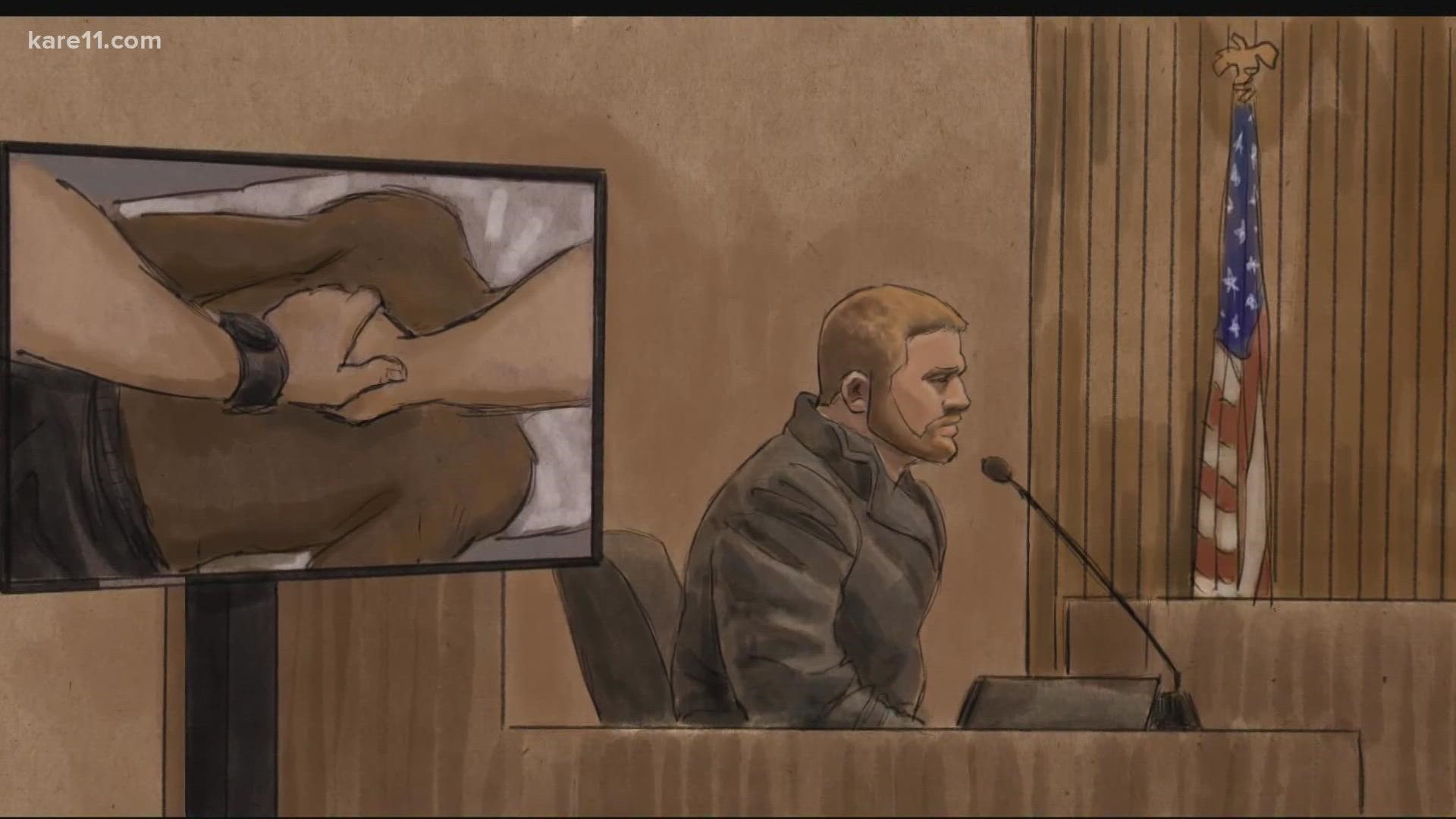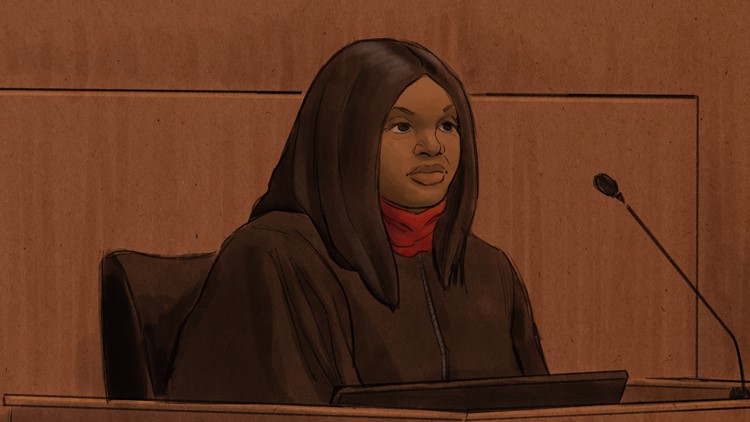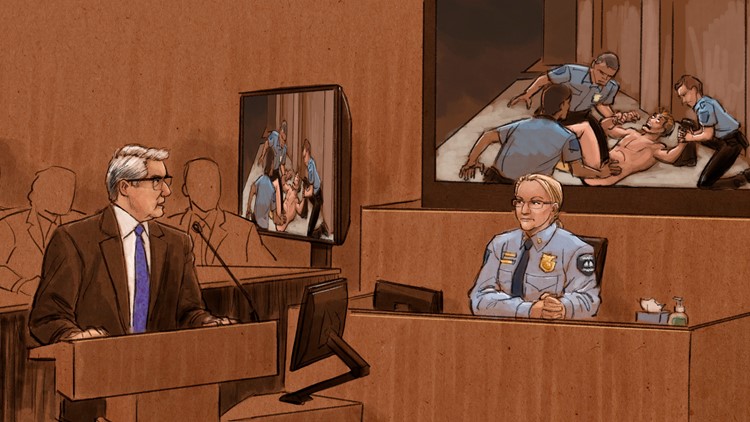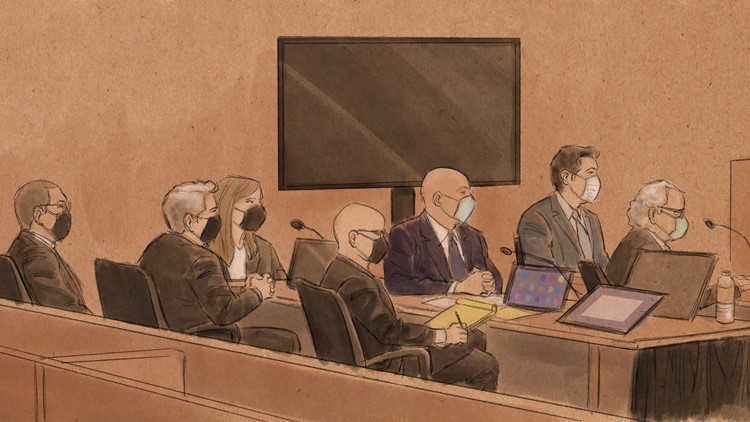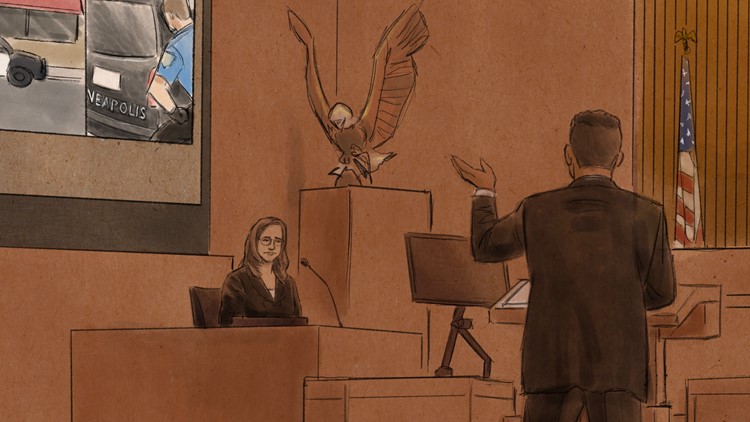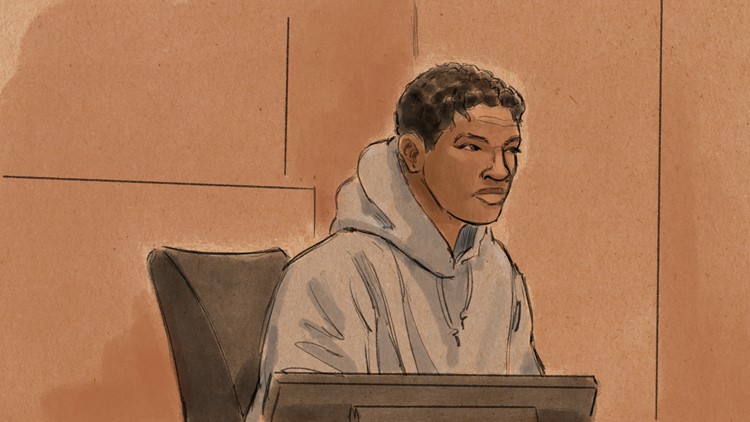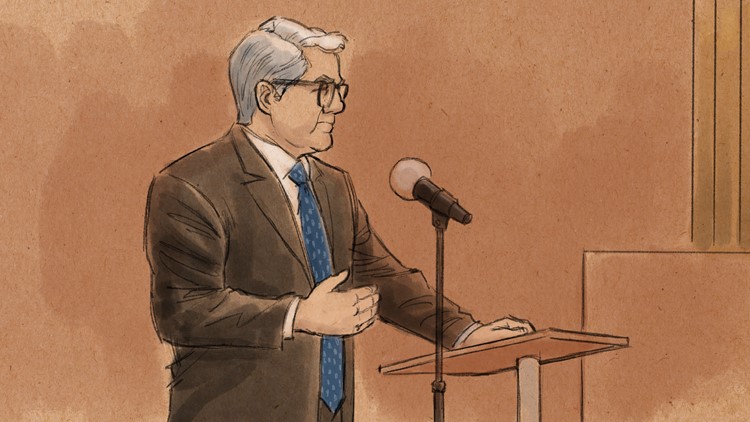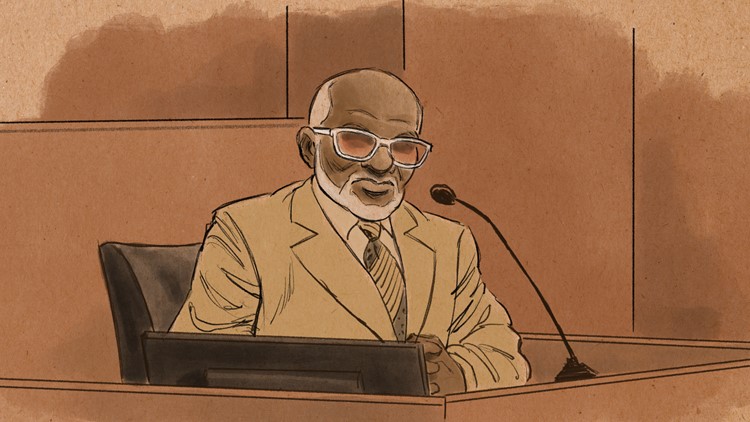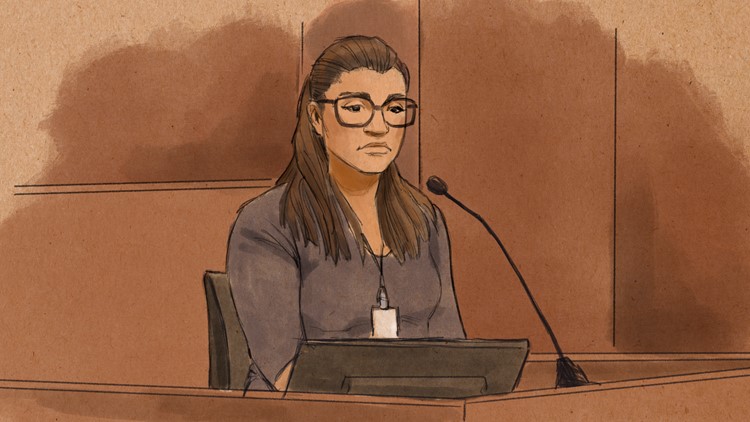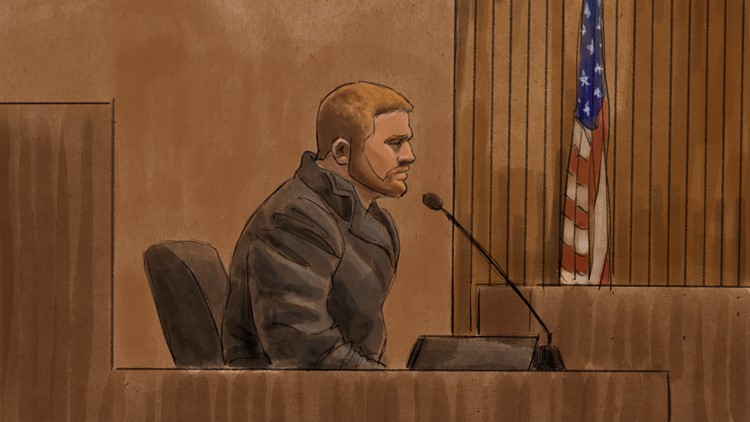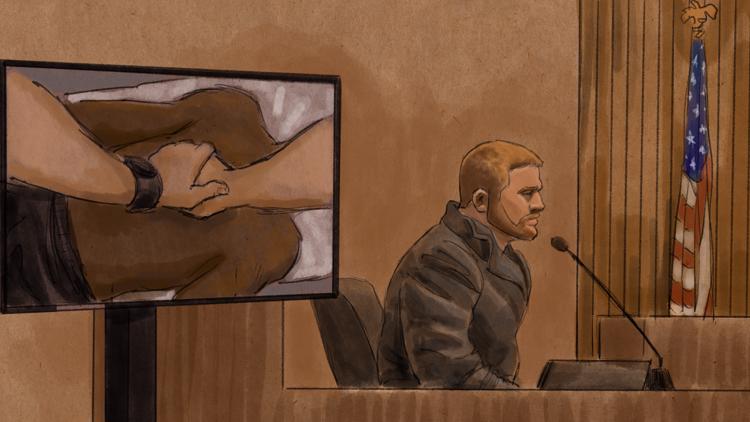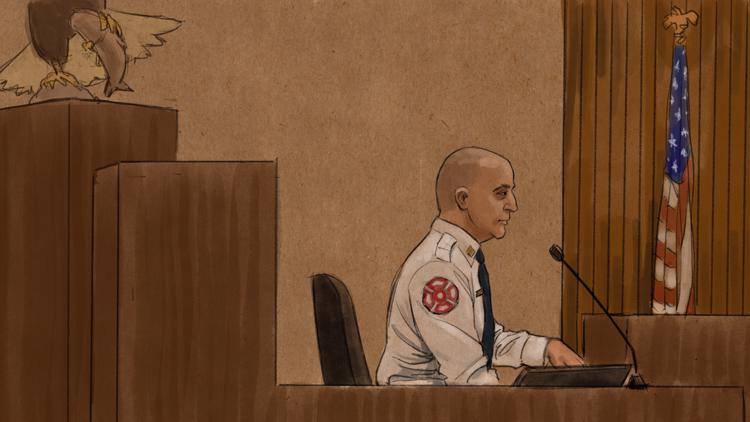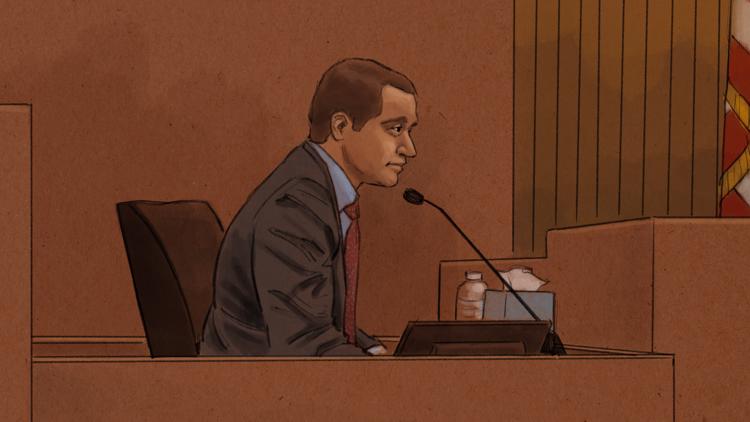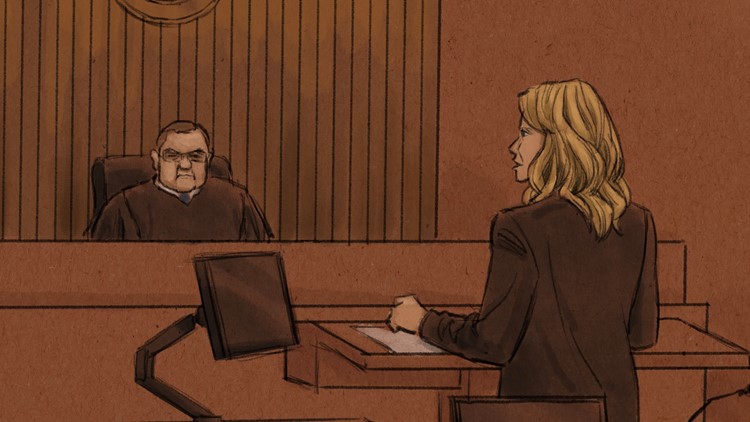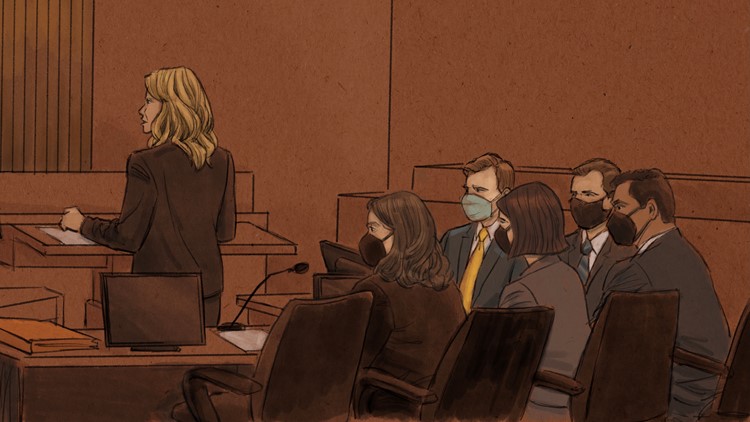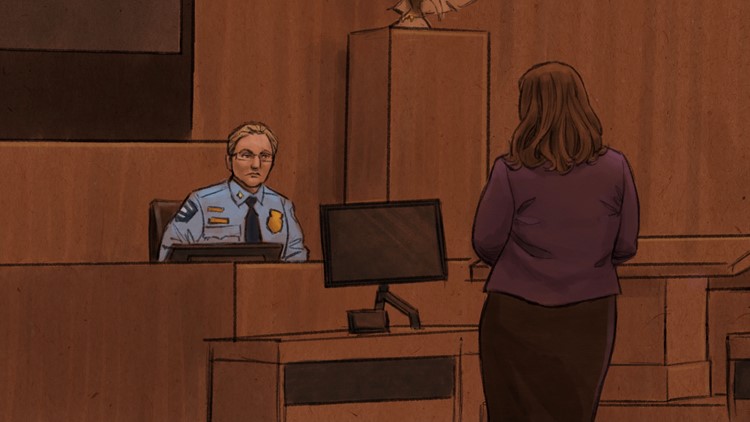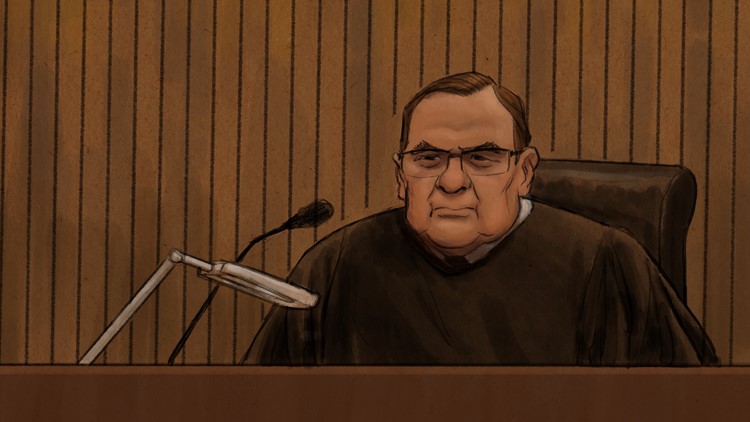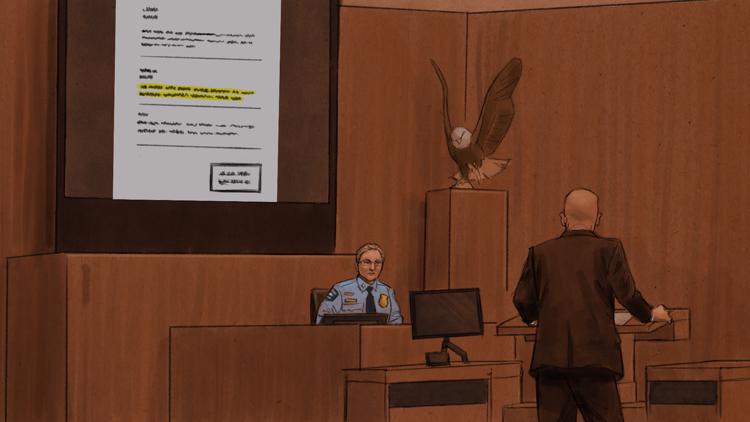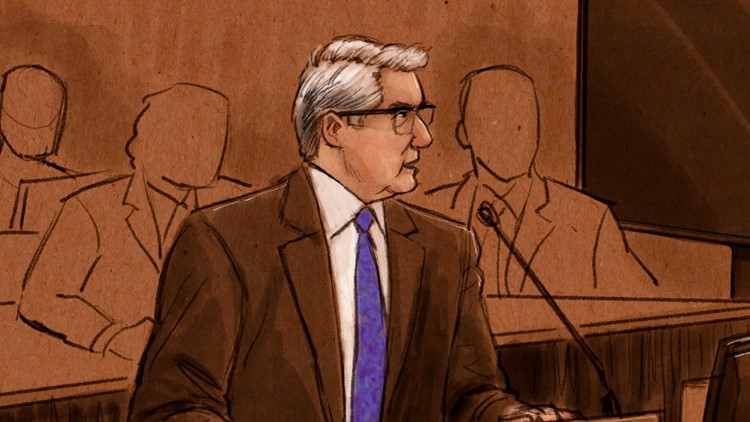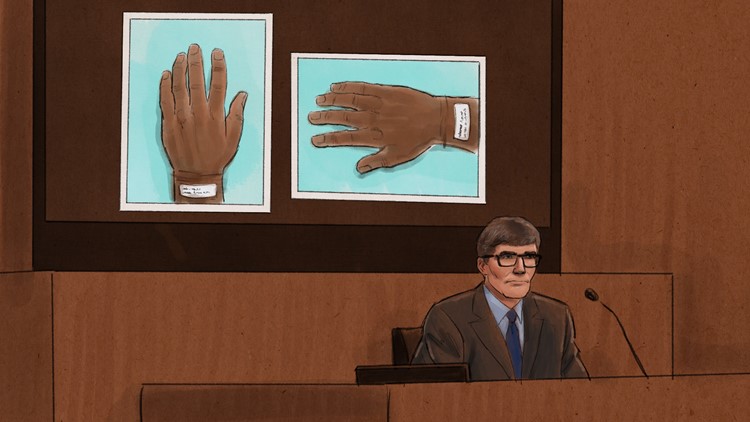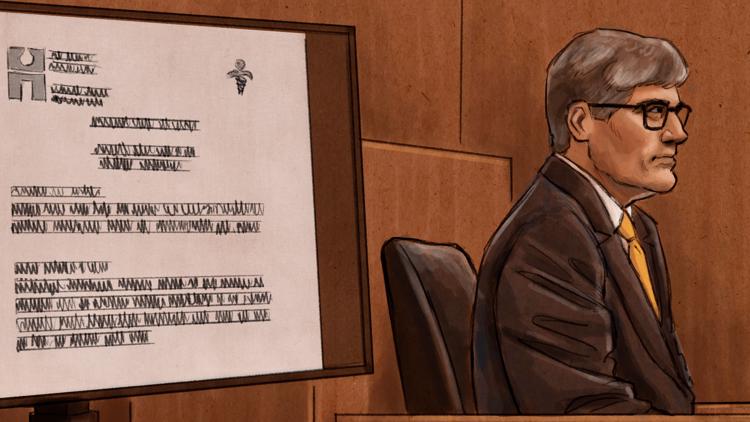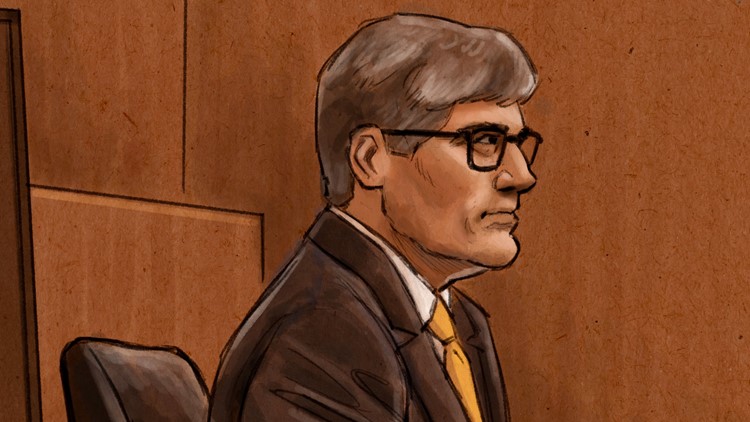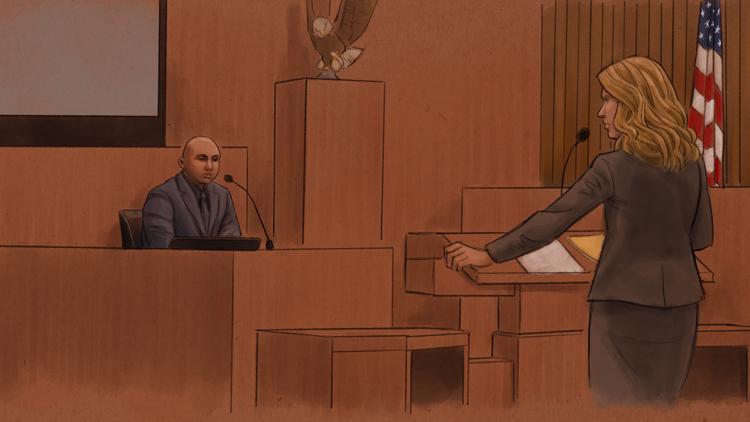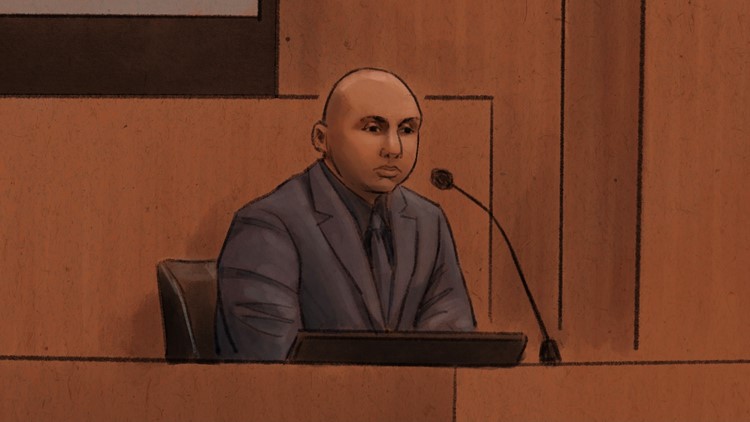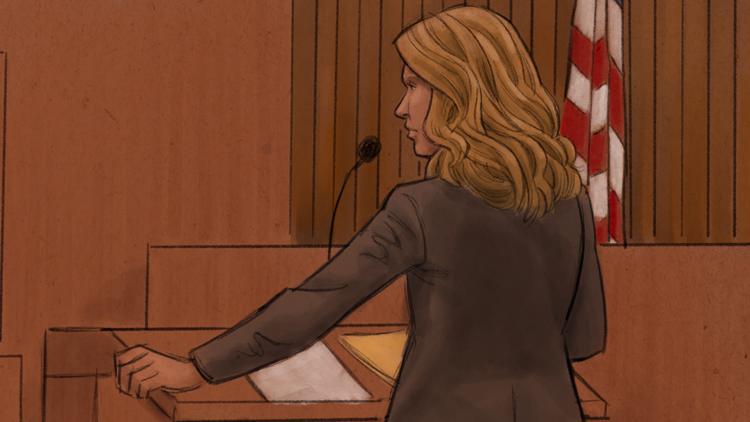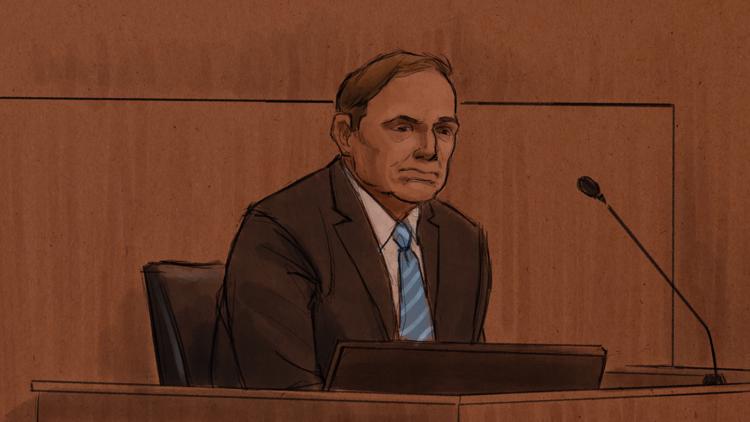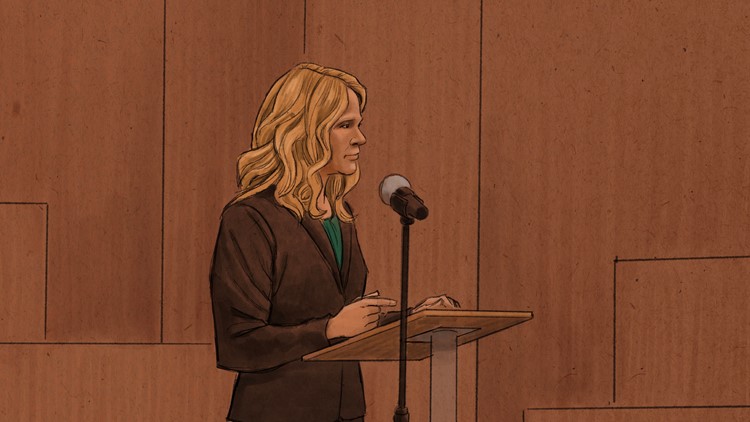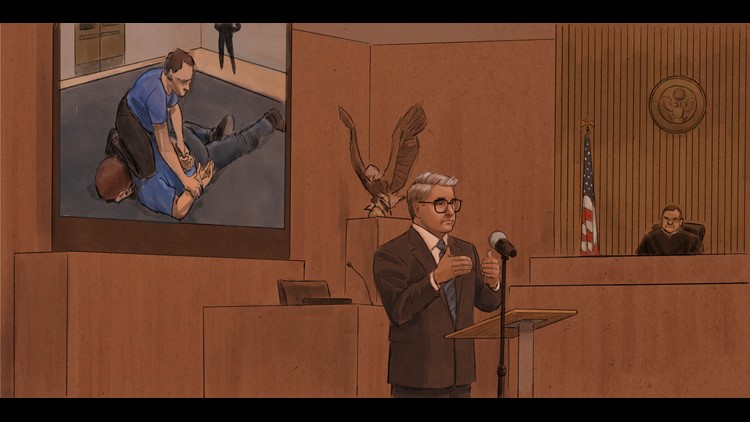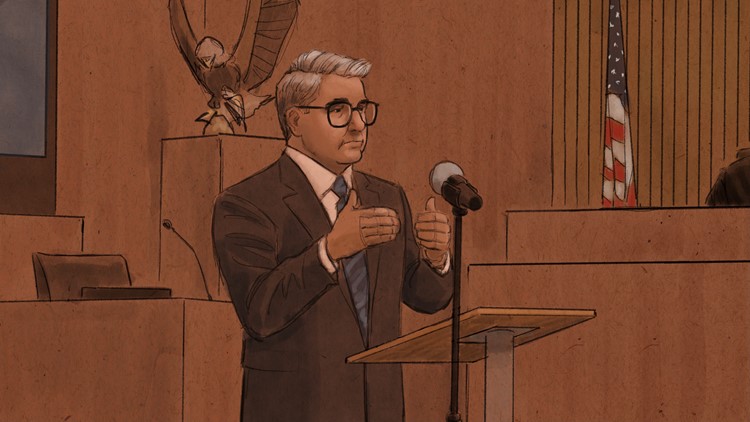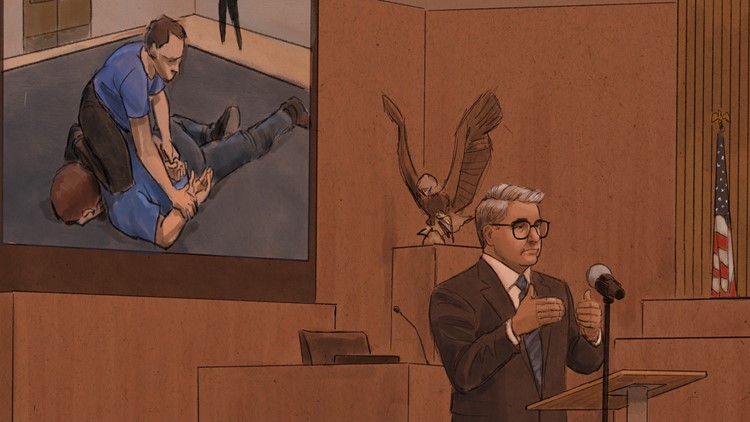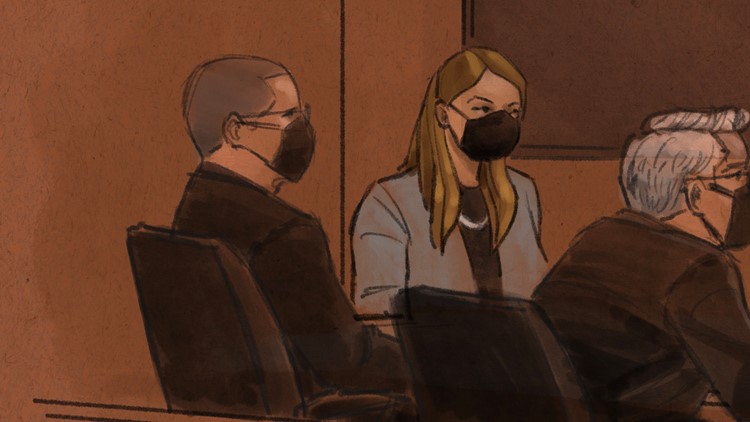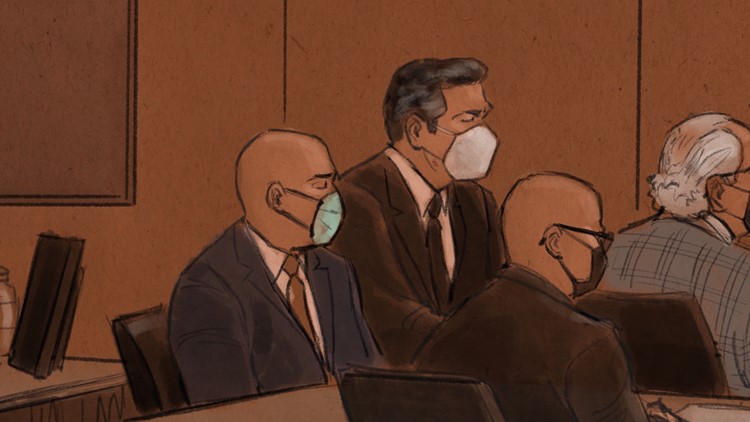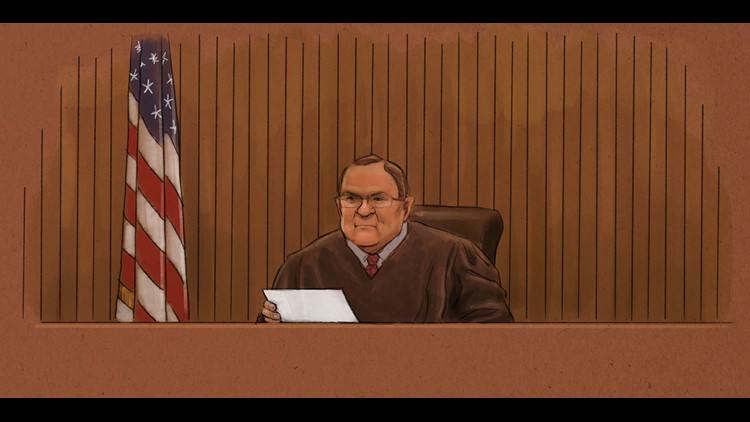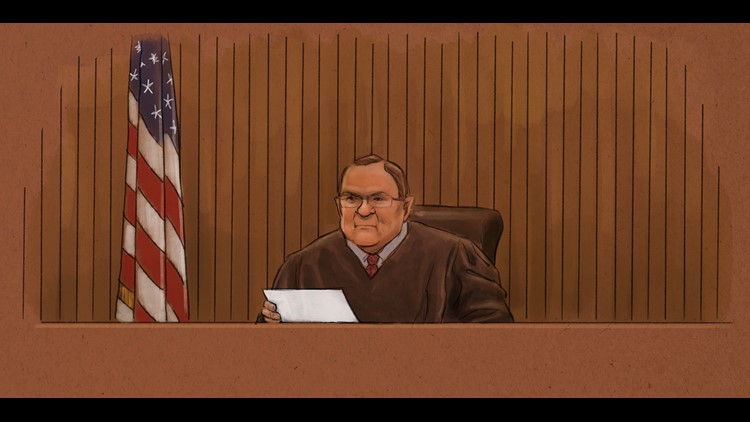ST PAUL, Minn. —
- Judge denies defense's call for mistrial
- First responders testify about the timeline of rendering aid to Floyd
- Judge Paul Magnuson rules Floyd's girlfriend Courteney Ross will not testify
Wednesday, June 26
Wednesday marked the third day of testimony in the federal trial of former Minneapolis police officers — Thou Thao, J Alexander Kueng and Thomas Lane — who are accused of violating George Floyd's civil rights at the time of his death in 2020.
Prosecutors focused heavily on what they say was the officers' lack of intervention to save George Floyd's life. Jurors heard from several first responders, giving them a closer look at those crucial few minutes and the medical response as first responders tried to treat him.
The court heard from an EMT and a fire captain, who both attempted live-saving efforts, but said Floyd was likely already dead when they arrived. Genevieve Hansen — an off-duty firefighter who says former officer Tou Thao prevented her from helping Floyd — also took the stand.
Hansen could be seen in body camera and witness video, identifying herself as an off-duty Minneapolis firefighter, and begging to help George Floyd. She told jurors she was immediately concerned when she happened upon the scene and saw Floyd unconscious.
"It was just alarming the amount of people on top of one man, not moving, and handcuffed," she said
Hansen testified she would have checked for a pulse and started chest compressions if the officers would have allowed it.
In cross examination of the witnesses, the defense for Tou Thao keyed in on the possibility that Floyd was suffering from excited delirium — a controversial diagnosis not recognized by the American Medical Association — and on the danger presented by the crowd.
Thomas Lane's attorney played video of Lane doing chest compressions on George Floyd in the ambulance. He asked Smith if Lane was helpful, to which Smith said "yes."
Court is scheduled to resume Thursday at 9:30 a.m.
LIVE UPDATES:
4 p.m.
After the jury was dismissed for the day, the defense team called for a mistrial over questions from the state that they say go against pre-trial rules.
Judge Magnuson denied the request, but warned of continuing to use "leading" questions.
Court is scheduled to resume Thursday at 9:30 a.m.
2:30 p.m.
Genevieve Hansen, the off-duty firefighter that Norton encountered outside of Cup Foods, followed his testimony Wednesday afternoon.
Hansen told the court she was out for a walk when she noticed the commotion in front of Cup Foods, eventually coming into view of a man, later identified as George Floyd, being held down by the officers.
She said she approached Thao and introduced herself as a firefighter. She went on to say that Thao told her if she was really a Minneapolis firefighter, she would know better than to get involved. She said she remembers seeing Floyd unconscious and could see signs of a person being dead or nearly dead.
Hansen shared that she felt it was a "time-sensitive thing" and wanted to help Floyd, but that Thao told her to get back up on the sidewalk. She testified that she did not believe it was a "normal" scene and that she called 911 and began recording what was happening at the scene. She told the courtroom she focused on Thao because she thought he was "in the way of George Floyd's medical attention.
During cross examination, Plunkett asked Hansen again about the fluid she thought she saw coming from Floyd's body. It was later discovered that the fluid was coming from a vehicle.
Paule then asked Hansen if she was aware of what led up to Floyd being in that position, or if she was aware of what the other officers who were out of her sight were doing. She answered "no" to both questions.
Paule then pivoted to ask why paramedics might put a patient in an ambulance and leave the scene before performing life-saving measures. She said it is usually done to spare the public, especially in the presence of minors.
Hansen was then shown a transcript from an interview she had done earlier with investigators, where she told them a "load and go" was usually done when a scene wasn't safe, and that she didn't know if Thao had any idea about what was going on behind him. She told Paule she didn't remember making that statement, but did not deny she did.
1:30 p.m.
Norton returned to the stand after the court's afternoon break, saying he had little information about what was happening at the scene when he arrived.
Norton told the court he encountered a crowd starting to gather outside, and heard people saying the officers had killed a man. Norton then ran into off-duty Minneapolis firefighter Genevieve Hansen, who says she started "emotionally vomiting" words. Hansen told Norton that the officers wouldn't let the man up and was asking him to "please tell me he's alive."
He testified that he didn't see a patient right away, and when inquiring about the situation, officer Thao told him that they "didn't need fire, just EMS." Norton can be heard on Thao's body camera footage telling him that he was EMS, and then shows Norton entering Cup Foods.
Inside Cup Foods, Norton says he encountered officer Kueng, who told him that the ambulance had moved a few blocks away. Norton said after finding the ambulance, he replaced officer Lane, who had been performing life-saving efforts on Floyd.
Norton then testified that he immediately reported that there had been a death in police custody, and that an off-duty firefighter had been a witness. He said had fire crews arrived right away, they would not have waited until an ambulance arrived to do CPR on Floyd.
Paule, Thao's attorney, led cross examination of Norton. He asked about the concept of excited delirium, to which Norton replied that he has had experience working on someone exhibiting excited delirium, but says the American Medical Association no longer sees the condition as a viable medical diagnosis.
Plunkett, Kueng's attorney, then questioned Norton about the proper way to check a pulse. He asked Norton whether the neck or wrist was better, while video showed Kueng failing to find a pulse through Floyd's wrist.
11:40 a.m.
Jeremy Norton, a supervisor with the Minneapolis Fire Department who responded to the scene that day, was next to take the stand.
Norton told the courtroom that fire crews arrived approximately one minute and 30 seconds after getting the call. He said they received the call around 8:30 p.m. for a Code 2, meaning "assist with a mouth injury," but within a few minutes that code was upgraded. He reiterated what 911 dispatcher Jena Scurry said Tuesday, that fire crews are often called into emergency situations as a buffer to keep someone alive until an ambulance arrives.
After a few more questions from the prosecution, court was dismissed for its afternoon break.
9:30 a.m.
A paramedic who examined George Floyd at the intersection of 38th and Chicago was the first witness called on Day 3 of the federal trial of three former officers accused of depriving Floyd of his civil rights.
J. Alexander Kueng, Thomas Lane and Tou Thao are charged with failing to provide Floyd with medical care as fellow officer Derek Chauvin knelt on Floyd's neck for more than nine minutes. Thao and Kueng face an additional count for failing to stop Chauvin, who was convicted of murder and manslaughter in state court last year.
Prosecutors on Wednesday called Derek Smith, a paramedic with Hennepin Healthcare, who arrived on scene after then-Minneapolis police officer Derek Chauvin had kneeled on Floyd's neck for more than nine minutes while detaining him following an alleged counterfeiting incident.
Federal Prosecutor Manda Sertich played a video that showed Smith bending down to take Floyd's pulse, with Chauvin's knee still on his neck. Smith testified that he could not locate a pulse, and Floyd's pupils were large, suggesting he was already deceased.
“I think he’s dead, I’d like to provide patient care away from the scene,” Smith was heard saying on tape.
When asked why he wanted to move Floyd, Smith cited a large crowd that had "elevated tones" and a desire to respect the dignity of the patient, saying that responding to a cardiac arrest sometimes requires techniques that are "grotesque" to lay people.
Smith says Lane eventually joined him in the ambulance to help perform CPR. When Smith asks what happened, Lane tells him about the about forgery, says Floyd was resisting and "they basically restrained him until you guys got here."
During cross examination Lane's defense attorney Earl Gray asked Smith if he recognized the former officer, and then questioned him about Lane's involvement. When he asked the paramedic if Lane appeared "indifferent" to the situation prosecutors objected, triggering a lengthy sidebars with attorneys and Judge Paul Magnuson.
"Lane is charged with violating Floyd's rights by failing to render aid so this is important for his defense," Tweeted KARE 11's Lauren Leamanczyk, who is at the federal courthouse in St. Paul monitoring the courtroom proceedings.
Gray played a lengthy video of Lane performing chest compressions on Floyd in the ambulance, until first responders from the Minneapolis Fire Department arrive to take over.
"Was he helpful to you when he was in there assisting you with Mr. Floyd?” Gray asked the witness.
“In my opinion he was helpful,” Smith responded.
Defense attorney Robert Paule, representing Kueng, asked Smith questions about the crowd and whether it made him feel unsafe on the scene. "I felt there was a hostile crowd, yes," Smith replied.
Paule then moved on to the topic of excited delirium, a condition described as is a controversial syndrome sometimes characterized as a "potentially fatal state of extreme agitation and delirium." While not recognized by many medical organizations, Smith testified that he has dealt with patients he believed were experiencing excited delirium, "running around the streets naked, yelling, sweating, heart rate is through the roof."
When asked about the likelihood of reviving a person in cardiac arrest experiencing excited delirium, Smith said he doesn't think that person can be revived.
He then told the courtroom he suspected Floyd was experiencing excited delirium upon his arrival on the scene.
Tuesday, Jan. 25
On the second day of the federal trial for three former Minneapolis officers accused of depriving George Floyd of his civil rights in May of 2020, police body camera footage was the center of attention.
Before testimony began Tuesday morning Judge Paul Magnuson announced several rulings, including one that prohibits George Floyd's girlfriend Courteney Ross from taking the stand, based on interviews she gave Monday after court adjourned.
RELATED: 'They're just as responsible': Courteney Ross, George Floyd's girlfriend, reacts to federal trial
FBI forensic examiner Kimberly Meline returned to the stand after being called on Monday afternoon, when she began analyzing video from Thomas Lane's body camera. On Tuesday she broke down video that captured the perspective of former officer J Alexander Kueng. After wrapping up testimony on Kueng's video, Meline was asked to compare and contrast two additional videos of the incident: footage from a city camera that offers a wide view of the intersection at 38th and Chicago (where Floyd's murder took place) and the viral cellphone video captured by teen Darnella Frazier.
Cup Foods cashier Christopher Martin was the second witness called by federal prosecutors. He was working on May 25, 2020 when George Floyd came into the convenience store to buy cigarettes, allegedly with a counterfeit $20.
Martin told the court he accepted the $20 and immediately knew it was fake. He says he told a manager, who told him to go outside and convince Floyd to come back in. When he refused, police were called to the store, which brought all three officers and Derek Chauvin to the scene.
Martin was cross examined by defense attorney Robert Paule, representing Thou Tao, and Thomas Plunkett, the attorney representing J Alexander Kueng.
Charles McMillian, an eyewitness to the entire incident on the day of Floyd's death took the stand next. In his recounting of the day, he told the court he did not recall any of the officers rendering aid to Floyd, and does not remember Floyd resisting arrest or fighting the officers.
The final testimony Tuesday afternoon came from the 911 dispatcher who took the call from Cup Foods, Jena Scurry.
Scurry detailed what she remembered of the night of May 25, recalling that she saw Chauvin kneeling on Floyd's neck and was disturbed enough to call the police sergeant on duty.
Court is scheduled to resume at 9:30 a.m. Wednesday.

